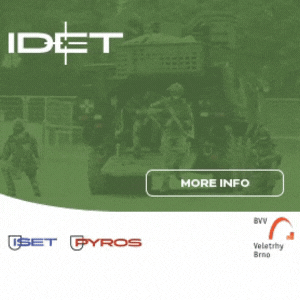US Threat Assessment for 2025 – Inspiration for the Czech Republic
In late March, the Office of the Director of National Intelligence released the Annual Threat Assessment 2025 (ATA 2025) of security threats to the U.S. Responsibility for its development and release has already been assigned to the new Director of National Intelligence, Tulsi Gabbard.

Key findings and strategic conclusions of ATA 2025
The ATA 2025 document is publicly available on the Office of the Director of National Intelligence website, and anyone can study the 30-page document in detail. Therefore, this article will not go into its contents in depth, but will only summarize the main findings and strategic conclusions.
Main findings:
- The ongoing and growing threat from non-state actors—particularly terrorist organizations and transnational criminal networks—which are constantly adapting to new operational conditions, strengthening their technological capabilities, and using every opportunity to increase their strategic and operational effectiveness. (They are a key component of threats related to illegal migration.)
- The steadily increasing potential of threats from rival states (China, Russia, Iran, DPRK - the "axis of evil"), which use a wide range of tools for their operations (cyber-attacks, disinformation, military pressure, economic expansion, etc.), which are constantly adapting technologically to the maximum possible level, hybridizing into effective national and international structures and trying to stabilize their position and maximize their weight in the emerging multipolar order of the global environment.
- Threats through cyber tools of national and international action are increasing, and in particular the potential for threats to various elements of critical infrastructure is increasing.
- The ever-increasing potential for irregular migration remains a negative multiplier in terms of maintaining international security stability.
Key strategic conclusions:
- The need for a comprehensive approach to competing with states such as China and Russia that will require the sustained maintenance and development of military power, diplomatic activity and technological superiority.
- The need for continued strengthening of cyber security, in particular ensuring adequate protection and defence of critical infrastructure.
- The need to modernise intelligence capabilities to be able to eliminate global threats, including hybrid effects, and thereby increase the effectiveness of hybrid effects elimination.
- The need to integrate national and international security systems within the emerging multipolar environment to be able to eliminate global threats, including hybrid effects of a global nature.
While the above main findings and key strategic conclusions are primarily directed at the U.S. security community, they are also a useful complement to similar considerations undertaken by other states, including the Czech Republic.
The security process and the role of intelligence services
The process of ensuring state security can be divided into 4 phases:
A. Analysis of the security environment (threats and risks)
B. Formation of security policy (objectives, resources)
C. Creation of security capabilities
D. Deployment of security capabilities
The participation and role of intelligence agencies in each phase may vary—depending on the remit and capabilities of the specific agency.
This document is produced through cooperation between individual intelligence services involved in analyzing the security environment. It is an intelligence synthesis of a large volume of information but is exclusively strategic in nature (no operational or tactical data is included). During its creation, it is classified. Upon completion, it is declassified and becomes a public document.
This document is created annually due to the rapid changes in the security environment. It serves as a suitable basis for discussion and the development of national security policy. This is confirmed by Tulsi Gabbard, who, in the introduction, clearly defines the content and intended use of the document, stating that ATA 2025 is intended for all those involved in shaping U.S. security policy.
In a democratic society, the implementation of Phase B of the provision of state security must be conducted in public - but this means a clear understanding of what such a public debate may involve. The subject of such a discussion may be:
- Assessment of current threats to the state (threats and risks)
- Formulation of strategic objectives and priorities for national security and defense
- Resourcing of national security and defense
- The legal framework for the provision of national security and defense
Documents like ATA 2025 can serve as input for such discussions, which may lead to the development of various strategic documents.
During the implementation of phases C and D, open discussions that could lead to the loss of strategic or operational advantages to adversaries must be avoided. In these phases, debate (and oversight) should take place exclusively within a classified environment. The only exception may be when public communication is intended to act as a deterrent.
Inspiration for the Czech Republic
The ATA 2025 document is certainly worthy of careful study and could serve as an educational tool for the security community in the Czech Republic. There is currently no open document of similar depth in the Czech Republic. The national intelligence system has not yet reached an integration phase that would allow the production of ATA 2025-style documents. Unfortunately, there has been no attempt to create such a document—despite the existence of necessary capabilities—through joint cooperation between the intelligence and academic sectors.
As a result, strategic discussions on the provision of security and defense in the Czech Republic have so far taken place only in the form of unproductive political rivalry. Whether this will change remains uncertain—the current hybrid politics, conducted in socially isolated “bubbles,” provides little hope of reaching a broad social consensus on state security policy. This could prove fatal in the future.




















